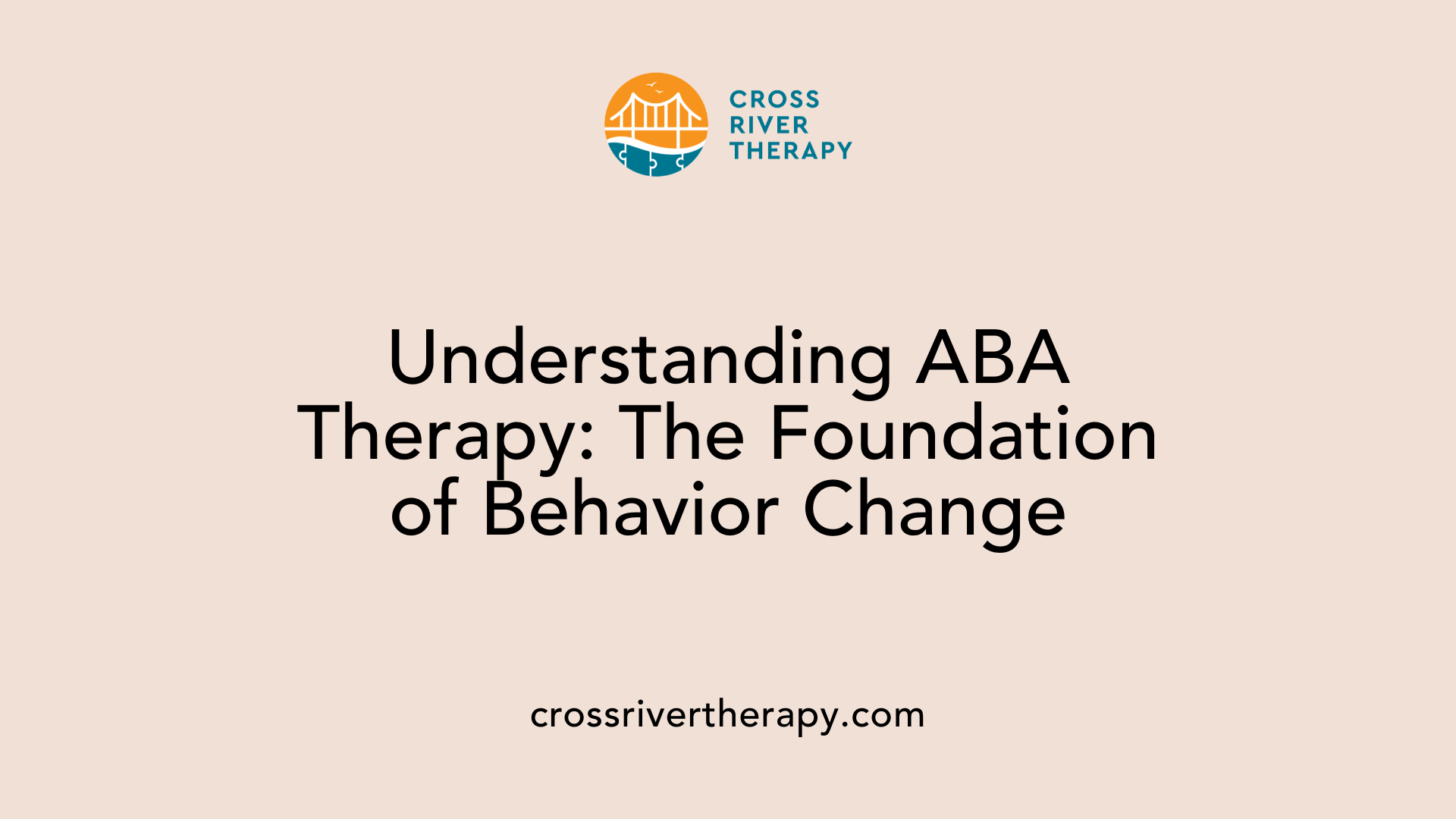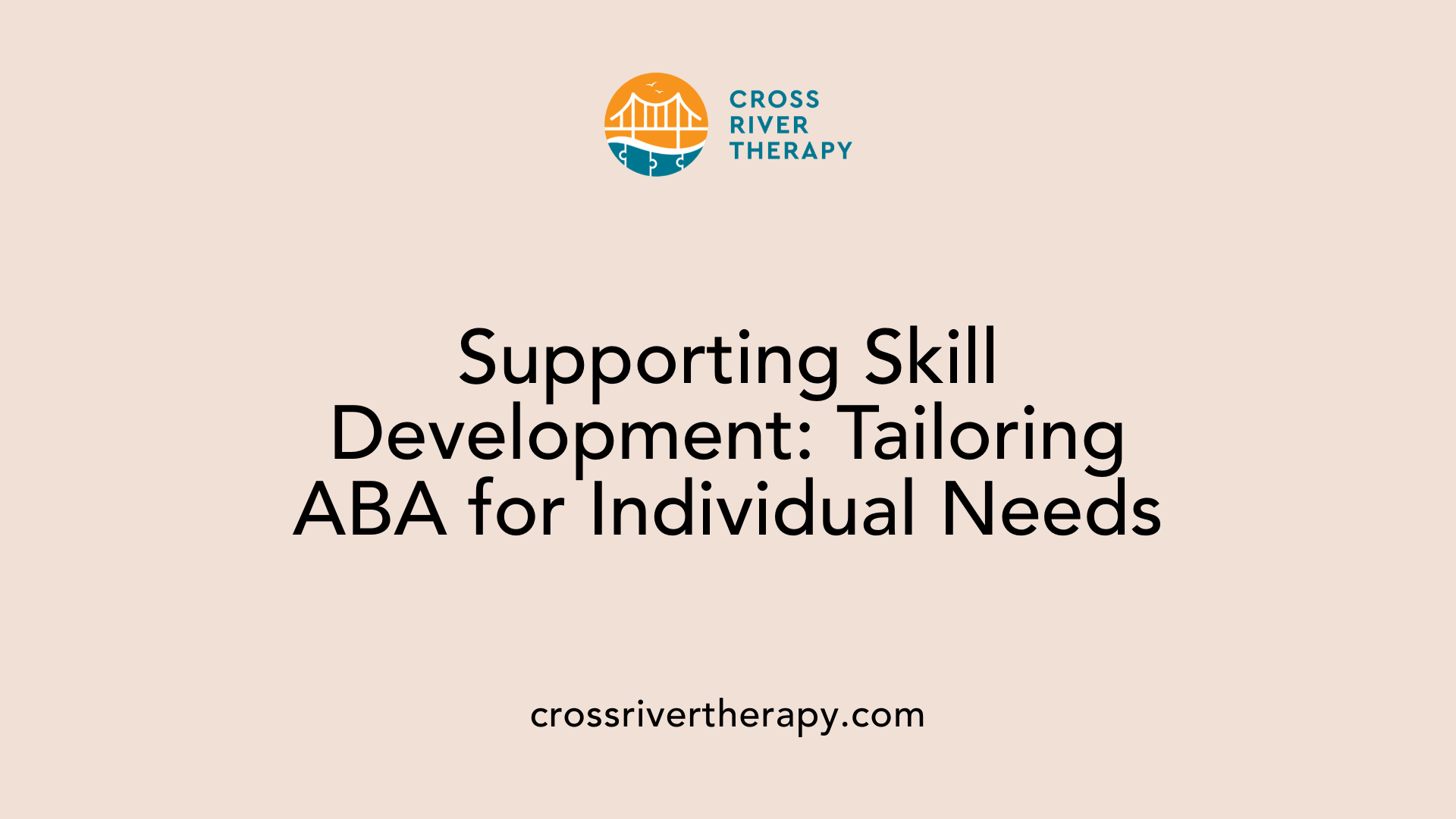How to Integrate ABA Therapy Techniques into Daily Routines
Incorporating ABA Therapy Into Everyday Life: Step-by-Step Guide
Understanding ABA Therapy
Applied Behavior Analysis (ABA) therapy is a widely recognized treatment for children with autism, aimed at enhancing essential life skills through structured and positive interventions. Integrating ABA techniques into daily routines can significantly benefit children by providing consistent opportunities to learn and apply new skills in their natural environments. This article explores the methods and benefits of incorporating ABA therapy into everyday activities, offering practical strategies and insights for parents and caregivers.
What is ABA Therapy and How It Functions

Understanding ABA Therapy
ABA (Applied Behavior Analysis) therapy is an evidence-based approach designed to improve the lives of children on the autism spectrum by modifying behaviors. This scientific method concentrates on understanding the principles behind behavior, allowing therapists to promote desired actions and reduce problematic ones. Through individualized interventions, ABA therapy not only enhances communication and social skills but also prepares children for daily living challenges.
Core Techniques in ABA
At its core, ABA employs a range of techniques to facilitate learning:
- Positive Reinforcement: This involves rewarding a child for engaging in desired behaviors, increasing the likelihood of those behaviors being repeated.
- Shaping: This technique reinforces gradual approximations toward a desired skill, encouraging improvement over time.
- Prompting and Prompt Fading: Initially providing full support and gradually reducing it helps foster independence in skill acquisition.
Seven Dimensions of ABA
ABA therapy is guided by seven essential dimensions, which include:
- Applied: Addressing socially significant behaviors.
- Behavioral: Measuring observable behaviors.
- Analytic: Demonstrating functional relationships between interventions and behaviors.
- Technological: Using procedures that are clearly defined.
- Conceptually Systematic: Grounding practices in behavior-analytic principles.
- Effective: Ensuring interventions produce significant changes.
- Generality: Achieving behavior change that lasts across different settings and times.
Benefits for Children with Autism
The integration of ABA therapy in a child's daily routine can yield numerous benefits:
- Independence: Teaching daily routines empowers children with essential life skills.
- Structured Environment: Consistent routines reduce anxiety and enhance learning.
- Positive Behavior Modification: Focusing on reinforcing desired behaviors leads to improved social interactions.
In sum, ABA therapy not only nurtures individual skills but also enhances overall well-being, making it a pivotal tool in the developmental journey of children with autism.
Practical Integration of ABA Techniques

What are practical strategies for integrating ABA techniques into daily routines?
Incorporating ABA techniques into daily routines can make a significant difference in a child’s development, especially for those with autism spectrum disorder (ASD). One key strategy is utilizing positive reinforcement. This could involve allowing a child to engage in their favorite game or activity as a reward after completing chores. Such incentives improve motivation and encourage the repetition of desired behaviors.
It's essential to establish clear and consistent rules. This structure helps children understand expectations and promotes compliance. Additionally, prompting—which may be physical, verbal, visual, or auditory—can significantly support the learning of new skills. For instance, using a gentle touch to guide a child’s hand can provide them the necessary help to complete a task.
Using visual schedules is another effective strategy. Visual aids like color-coded calendars, picture schedules, or activity checklists can engage children by providing a clear representation of daily tasks. These supports empower children to anticipate upcoming activities, thus reducing anxiety and improving coordination within routines.
Furthermore, structuring home-based activities enhances learning outcomes. Engaging in color matching games or interactive cooking sessions not only incorporates skills from ABA principles but also fosters family participation. Involving family members helps integrate these strategies naturally into everyday life.
Lastly, looking for opportunities to turn mundane activities—like bedtime or mealtime—into enrichment moments can promote language development and social skills, solidifying ABA practices seamlessly within the child’s environment.
Enhancing Skill Development Through ABA

How can ABA therapy support skill development in children with autism?
ABA therapy supports skill development in children with autism by utilizing individualized therapy plans tailored to address specific needs. This approach enhances critical areas such as communication, social skills, and daily living abilities.
Key strategies within ABA include breaking down complex skills into manageable tasks. For instance, when teaching a child to tie their shoes, the task can be divided into simpler steps, allowing for gradual mastery. This method reduces overwhelm and increases confidence.
Tailoring ABA plans to individual needs
Effective ABA therapy begins with a thorough assessment of the child's unique challenges and strengths. This personalized planning ensures each session targets the most relevant skills, making learning both effective and engaging. Collaboration with therapists helps parents incorporate these strategies into daily routines, reinforcing learning in familiar environments.
Natural Environment Teaching (NET)
Natural Environment Teaching (NET) highlights the importance of applying learned skills in natural settings. For instance, practicing communication during meal preparation or playing with peers encourages spontaneous interaction while reinforcing social skills. This real-world application enhances the relevance of skills, making them easier to retain.
Generalization of learned skills
Generalization ensures that skills acquired in therapy carry over into everyday life. Practicing in varied settings helps children transfer learning seamlessly, whether it's following household chores or navigating social situations outside the home. Regular reinforcement of these skills across different environments is essential for enduring change.
Promoting communication and social interaction
ABA promotes communication through structured interactions that may involve modeling and role-playing. For example, using favorite toys can sustain interest during lessons about sharing and turn-taking. Visual supports, such as picture schedules, aid communication, enabling children to express their needs effectively.
| Strategy | Description | Examples |
|---|---|---|
| Tailored plans | Personalized therapy addressing specific needs | Individual goals based on assessments |
| Natural Environment Teaching (NET) | Applying skills in real-life situations | Practicing communication during cooking |
| Generalization | Transferring skills learned to various settings | Using social skills with peers at school |
| Positive reinforcement | Rewarding desired behaviors to encourage repetition | Praise or small treats for completing tasks |
The Power of Positive Reinforcement in ABA

What role does positive reinforcement play in ABA therapy, and how can it be used effectively?
Positive reinforcement plays a crucial role in ABA therapy by providing rewards immediately following desired behaviors, which increases the likelihood of those behaviors being repeated. Grounded in B.F. Skinner's operant conditioning theory, this approach asserts that behaviors followed by positive consequences are more likely to be reinforced.
Effectiveness of positive reinforcement
For positive reinforcement to be effective, it must be delivered consistently and promptly after the desired behavior occurs. This consistency ensures a strong association between the behavior and the positive outcome, fostering both motivation and engagement.
Types of reinforcers
There are various types of positive reinforcers, which can be tailored to the individual’s preferences:
- Natural Reinforcers: These arise naturally from the behaviors themselves, like the enjoyment of play after sharing toys.
- Tangible Reinforcers: Physical rewards, such as stickers or small toys, which can provide immediate gratification.
- Social Reinforcers: Verbal praise or high-fives that affirm positive behavior.
- Token Reinforcers: Tokens earned for good behavior can later be exchanged for a desired item or activity.
Association between behavior and reward
By primarily focusing on rewarding desirable behaviors instead of using punishment, ABA therapy promotes long-term behavioral change. Over time, this positive reinforcement builds confidence and encourages children to engage more consistently with their learning goals. Integrating these strategies into daily routines ensures that progress is not only possible but also enjoyable for children.
Addressing Criticisms and Concerns about ABA

Are there concerns or criticisms regarding ABA therapy that parents should consider?
Yes, there are numerous concerns regarding ABA therapy that parents should keep in mind. Critics, particularly autism rights advocates, often highlight historical methodologies that incorporated aversive techniques—approaches that have been criticized for potentially inflicting emotional harm and diminishing an individual's autonomy. This criticism emphasizes the need for a shift towards more personalized and community-centric methods that genuinely consider the voices and experiences of autistic individuals.
What do recent studies and findings say about ABA therapy?
Recent studies, including a notable report from the Department of Defense, have sparked further debate about ABA therapy. It suggested that extensive hours of therapy could actually correlate with poorer developmental outcomes for some children. These findings encourage parents to critically evaluate the therapy their children receive and to ensure that it aligns with their emotional and developmental needs.
How can parents ensure ethical practices in ABA therapy?
To promote ethical practices in ABA therapy, parents are encouraged to remain actively involved in their child's therapy sessions. This involvement helps ensure practices are appropriate, respectful, and individualized. Establishing open communication with therapists and focusing on strategies that emphasize positive reinforcement and the child's autonomy can pave the way for a more supportive and effective ABA experience. Engaging with the autistic community and utilizing feedback can also help parents navigate this complex landscape effectively.
Structuring Routines for Success
Creating predictable daily routines
Creating a structured daily routine is vital in ABA therapy. This predictability helps children anticipate activities, reducing anxiety and enhancing their engagement. For example, establishing a morning ritual that includes brushing teeth, getting dressed, and having breakfast can reinforce independence and provide clarity about what to expect throughout the day.
Engaging the child's interests
Incorporating a child's preferred activities can significantly boost their motivation to learn. Using their favorite toys or games during structured tasks allows learning to become a fun and engaging experience. For instance, teaching colors or counting through the use of toys not only makes learning enjoyable but also helps solidify their understanding of these concepts.
Consistency and patience in practice
Consistency is crucial when implementing ABA strategies at home. Parents should reinforce learned behaviors promptly with praise or small rewards, which strengthens positive actions. Patience plays a vital role as well; celebrating small successes encourages continued effort, fostering a positive learning environment.
Using Visual Supports as Communication Aids
Types of Visual Supports
Visual supports come in various forms, including:
- Picture schedules: These help outline the daily routine, making each task predictable.
- Visual aids and cards: Colorful images or illustrations that represent concepts or actions.
- Charts and checklists: Tools to track progress or steps in a task, enhancing understanding of routines.
Benefits for Children with Autism
Using visual supports can significantly improve communication among children with autism by:
- Enhancing understanding: Visual aids help clarify expectations and reduce anxiety linked to uncertainty.
- Promoting independence: Children can refer to visual cues, fostering self-management during daily activities.
- Engaging learning: Attractive visuals can capture attention, making learning enjoyable and memorable.
Integration into Daily Activities
Incorporating visual supports into everyday routines is simple:
- Use picture schedules during mealtime for choices (snack options).
- Implement checklists for morning routines (getting dressed, brushing teeth).
- Utilize visual cards for introducing new skills, reinforcing learning through familiar tasks.
Integrating ABA for Enhancing Daily Life
Applied Behavior Analysis (ABA) therapy presents invaluable techniques that can be seamlessly incorporated into daily routines to support children, particularly those on the autism spectrum. By leveraging positive reinforcement, structured activities, and individualized learning plans, caregivers can create a consistent and supportive environment where children can thrive. Furthermore, acknowledging criticisms and ethical concerns ensures that ABA therapy remains compassionate and effective. As families implement these strategies, they not only reinforce learning and desired behaviors but also facilitate meaningful improvements in the quality of life for their children, empowering them towards greater independence and social engagement.
References
- Top 5 Ways of Integrating ABA Therapy Into Your Child's Daily Routine
- Incorporating ABA Therapy into Daily Family Routines
- Implementing ABA Strategies: Practical Tips for Everyday Life
- Integrating ABA Therapy Into Your Child's Daily Routine - OURS ABA
- How to Implement Effective ABA Therapy Strategies at Home
- Effective Home-Based ABA Therapy Strategies for Families
- Incorporating ABA Strategies into Everyday Activities
- Incorporating ABA Therapy Activities into Daily Routines at Home



